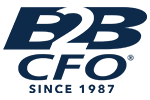
The 5 Levers of Cash Flow Optimization
Posted on September 14, 2022 by Peggy Head
Today’s economic circumstances are continuing to knock budgets, plans and projected quarterly numbers from their assigned seats. The economy continues to experience shockwaves in the areas of supply chain, human resources and rising prices. Inflation is at levels not experienced in the United States in more than thirty years. It is for this reason that strategic business advisors are focusing on a critical vision: optimizing cash flow. Cash flow is the heartbeat that keeps a business alive. During inflationary times, prices traditionally rise quickly but come back down more slowly and often never return to previous levels. At the same time, the cost of borrowing is also higher and there may be less availability of credit which can cause further restriction of working capital when it is needed most.
Let’s take a look at five levers that optimize business cash flow.
1.Monitoring Accounts Receivable:
If your business allows customers to buy now and pay later, effectively managing your accounts receivable is extremely important. Work with a strategic business advisor to create an environment that is most efficient for the billing and accounts receivable processes and fits your industry and business culture. For example, establish objective criteria to evaluate customer credit and make informed decisions on amounts of credit to extend to customers. Offering customers options on payment terms and methods can accelerate payments and make payment processing more efficient. Use your billing systems and personnel to monitor past due amounts and days sales outstanding weekly. Implement collection procedures that make sense for your business and consistently follow those procedures.
2.Mitigating Expenses:
In the current inflationary economic conditions, it is likely your business is experiencing increasing costs. Increases in overhead costs can especially drag profits down and can be more difficult to recapture through price increases to customers. Now is the time to take another look at every type of cost with new perspective on the value added by those expenditures. Prioritize costs and review contracts so that if it becomes necessary to reduce or eliminate expenses, you can take action quickly. Determine where flexibility exists in your cost structure. Considerations such as contract re-negotiation, changes in vendor payment terms, or outsourcing certain services may be tools you can employ to create a more effective and profitable cost structure for your business.
Track and measure the operational efficiency of your business frequently so that you are not surprised by the effect of changes. Set measurable performance indicators that reflect your efficiency goals, communicate the progress toward goal achievement to your team and offer incentives when the goals are achieved.
3. Promoting a Corporate Cash Culture:
The culture of a company is built upon shared values, a mission that ties everyone in the organization together and promotes engagement. Introducing a cash culture will further align the overall purpose and mission of an organization with its financial goals, thereby driving financial intelligence and profitable growth.
Financial health is not just the responsibility of the CEO and CFO. Team members in functions throughout the company impact the finances. Whether driving new business development, maintaining customer satisfaction, obtaining products and services, or performing essential back-office support services, each contributor impacts short-term cash activities, expenditures, and financial results. Increasing financial awareness in all business functions starts with communicating, holding each department accountable for their impact on the bottom line and incentivizing contributors for success.
4. Offering the Right Products and Services:
What is the mix of products and services that will maximize your company’s profits and cash flow? The answer to this question should take into account a number of factors including market demand, market share, the sales process, pricing models, profitability of each item or component sold, availability of products and qualified service providers, and other factors that may be specific to your business. A strategic business advisor can help you navigate the complexities and develop an optimal mix of products and services to market and sell that will provide the best cash position and profits.
If your company sells products that are inventoried, how that inventory is managed will have a tremendous affect on cash flow. The supply chain challenges companies have experienced in the past couple of years have caused long-standing reliable inventory management practices to fail. Just in time inventory levels, drop shipping, consignment and other practices intended to minimize shelf-time and expense have had to be adjusted or temporarily abandoned in favor of ordering as much as possible when available. In these circumstances, having agility to shift and change to accommodate supply chain constraints can make the difference between profit and loss. Now is the time for financial advisors to support inventory management with updated and revised forecasting methods, diligence with goods and materials contract costs tracking, reporting and monitoring of inventory turnover and item gross profit.
5.Updating Pricing Models:
Faced with rapidly escalating prices, many businesses have struggled with decisions to increase prices for the products and services they sell. Customer retention and sales growth targets are two considerations that sometimes weigh more heavily than bottom-line profit in the current period. Many businesses are contractually obligated to their current pricing structure which adds complexity to approaching customers to discuss price
increases. Assessing this decision should be a team effort within your company that involves sales & marketing, finance & accounting and operations. A divide can exist between knowing you need to increase prices and putting that decision into action – especially when the changes your company is experiencing are happening very quickly and no end is yet in sight. Monitoring on-going economic and industry developments is an essential part of this process.
If you determine a price increase is the right move for your business, another decision looms: how to implement. There are various strategies to consider such as which products, services and customers are affected, once-and-done or phased approaches, timing, communication, stock levels, and other factors. Planning and coordination among the team members is vital.
Raising prices can be a stressful event for a business. If your team is unified and determined, it will go a long way to alleviating the stressful aspects of the process. The result will be a solution that provides the most balanced outcome for the overall financial health of your company.

